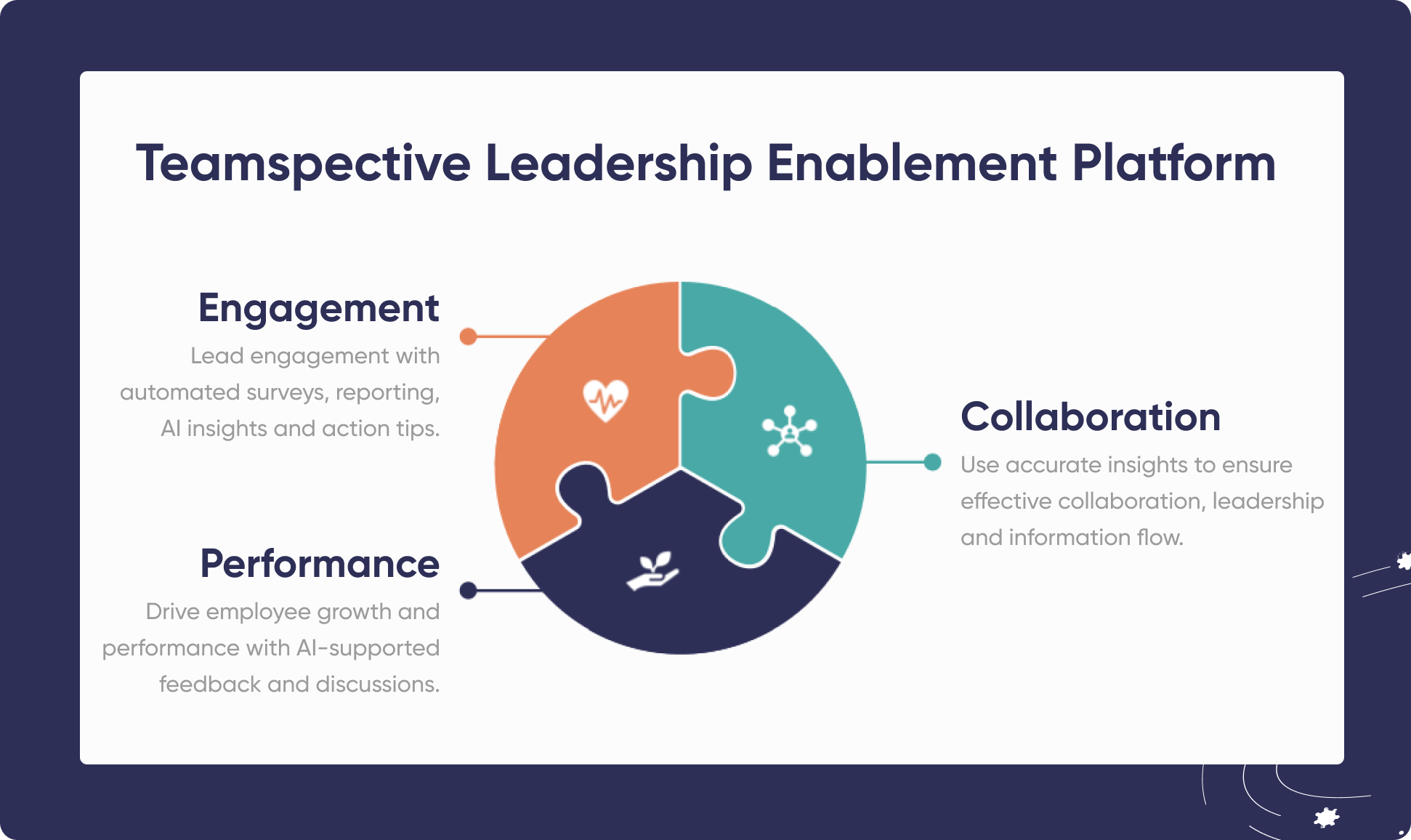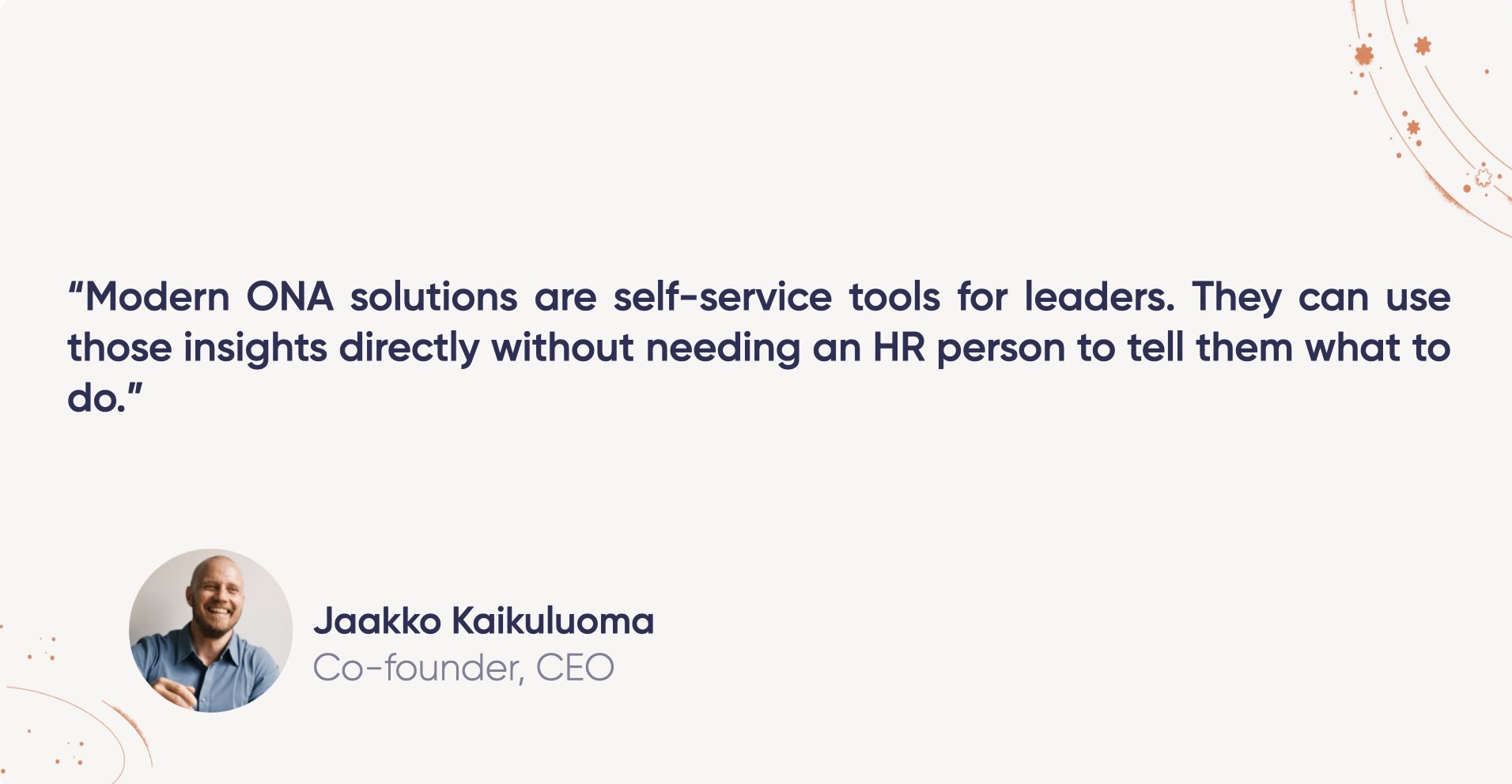The 3% Rule: How to Identify Key Influencers for Organizational Change
September 15, 2025What if I told you that engaging just 3% of your employees could influence 75-85% of your entire organization? It sounds too good to be true, but this is exactly what the 3% rule demonstrates.
What if I told you that engaging just 3% of your employees could influence 75-85% of your entire organization?
It sounds too good to be true, but this is exactly what the 3% rule demonstrates. While most companies burn resources trying to communicate with every single employee, smart organizations focus their efforts on a tiny fraction of their workforce, the natural influencers who already have everyone’s attention.
These influencers aren’t hiding in the C-suite or management ranks. They’re scattered throughout your organization. In this article, we’ll talk about why they matter and how to spot them.
What is the 3% Rule in Workforce Analytics?
The 3% rule identifies the small percentage of employees who have the most connections and influence within your organization. These aren’t necessarily your senior executives or formal leaders. They’re the people others naturally turn to for advice, information, or support.
In organizational network analysis (ONA), we call these individuals “super connectors.” They sit at the center of communication networks and have both high influence and numerous connections across departments, teams, and hierarchical levels.
Here’s what makes them special:
- They maintain relationships across different parts of the organization
- Others seek them out for guidance and information
- They can spread messages quickly and effectively
- Their opinions carry weight with their colleagues
Discover Your Hidden Networks
Understand how work really gets done and who are the key influences in your organization.
Why Does the 3% Rule Matter? The Importance of Internal Influencers
Here’s a common scenario. A manager who has been with the company for only three months is trying to communicate important changes to their team. Despite having the official authority, they’re not gaining traction.
Organizational network analysis often reveals why: the real influence in that group comes from a senior employee who has been there from day one. This person has built trust and credibility over the years, while the new manager hasn’t yet proven themselves to the team.
This pattern repeats across industries and organizations. Formal hierarchy doesn’t always align with actual influence networks.
These internal influencers shape organizational culture in three critical ways:
- Information Flow: They control how information spreads through your organization. When they embrace a message, it travels fast. When they’re skeptical, it stops dead.
- Change Adoption: Research shows that organizations using the 3% rule see 40% higher adoption rates for change initiatives compared to traditional top-down approaches.
- Cultural Transformation: These influencers adopt and interpret transformations for the rest of the organization to follow. They help their colleagues understand what changes mean and why they matter.

How You Can Use the 3% Rule to Improve Your Organization
The 3% rule is about creating a systematic approach to change that works with human psychology rather than against it.
Leading Successful Change Initiatives
When I work with organizations on major changes, I always start with the 3%. Here’s my process:
- Identify the key influencers using network analysis
- Engage them early in the change process
- Equip them with information and context they need
- Support them as they influence their networks
This approach cuts change implementation time by up to 40% compared to traditional methods.
Developing Future Leaders
The 3% rule reveals emerging leaders before formal succession planning catches them. I’ve seen organizations identify high-potential employees simply because they had strong network connections.
These employees often become excellent leaders because they already have:
- Trust from their colleagues
- Understanding of how work really gets done
- Ability to influence across organizational boundaries
Improving Performance Management
When you combine network analysis with performance data and employee surveys, you get a complete picture of talent in your organization.
I recently worked with a technology company that was struggling with low engagement scores in their design team. Traditional surveys showed the problem, but organizational network analysis revealed the cause: the design team had become completely isolated from the executive team and other departments.
The solution wasn’t more engagement surveys. It was rebuilding connections between teams.

Spotting At-Risk Employees
Network analysis also helps identify employees at risk of burnout or departure. When someone has too many connections and becomes a bottleneck, they’re heading for overload. When someone becomes disconnected, they’re likely to leave.
How to Identify Your Internal Influencers
Traditional methods for identifying influencers are expensive and slow. I’ve seen companies spend tens of thousands of dollars on consultants to interview employees and map relationships manually.

Modern workforce analytics tools make this process faster, cheaper, and more accurate.
Using Passive Data Sources
Tools like Teamspective can analyze your existing communication data to map organizational networks automatically. They connect to:
- Email systems
- Calendar applications
- Slack or Microsoft Teams
- Meeting platforms
This approach takes minutes instead of months and costs a fraction of traditional consulting. However, you need to remember to inform employees about using their data to run network analysis to avoid any privacy-related legal issues.
Active Surveys
Some organizations prefer running surveys where employees identify their key connections. This method gives employees control over their data and can reveal important relationships that don’t show up in digital communications.
Combining Both Approaches
The most comprehensive view comes from combining passive data analysis with targeted surveys. This gives you both the breadth of digital connections and the depth of meaningful relationships.
The ROI of Using ONA Tools Like Teamspective
I’m often asked about return on investment for organizational network analysis. The numbers are compelling.

Quantifiable Benefits
Using modern ONA tool has a number of quantifiable benefits:
- Faster Change Implementation: Organizations using the 3% rule implement changes 40% faster than traditional approaches. For a 1,000-person organization, saving even two days per employee during a major change represents hundreds of thousands in salary costs.
- Reduced Turnover: By identifying and addressing network issues early, companies can prevent costly departures. Replacing a single employee can cost 50-200% of their annual salary.
- Improved Collaboration: Better connections between teams lead to faster decision-making, reduced silos, and improved innovation.
The Self-Service Advantage
Instead of waiting for HR or consulting reports, leaders can access insights immediately and act on them. This real-time access to network insights, combined with performance data and employee feedback, creates a comprehensive talent analytics platform. Leaders can:
- Spot collaboration issues before they become problems
- Identify development opportunities for high-potential employees
- Make data-driven decisions about team structure and workflow

Implementing the 3% Rule in Your Organization
If you’re ready to apply the 3% rule, start with a specific challenge or change initiative. Don’t try to map your entire organization at once.
Step 1: Define Your Objective
Are you rolling out new technology? Implementing a culture change? Improving collaboration between departments? Be specific about what you want to achieve.
Step 2: Identify Your Network
Use organizational network analysis tools to map connections related to your objective. Look for employees with high influence and broad reach.
Step 3: Engage Your Influencers
Bring your 3% into the process early. Share context, gather their input, and equip them with what they need to support the change.
Step 4: Monitor and Adjust
Track how information and adoption spread through your network. Adjust your approach based on what you learn.
Step 5: Measure Results
Compare adoption rates, timeline, and employee satisfaction against previous initiatives or control groups.
Conclusion
The 3% rule can fundamentally change how companies approach organizational development. Mind you, this isn’t about playing favorites or creating an inner circle. The 3% rule allows you to work with the natural dynamics of human networks to achieve better outcomes for everyone.
When you combine network insights with performance data and employee feedback through platforms like Teamspective, you create a powerful system for continuous organizational improvement. Leaders get the information they need to act quickly, and employees benefit from more effective change management and development opportunities.
Ready to see the power of the 3% rule in action? Book a demo with our team of experts today.



